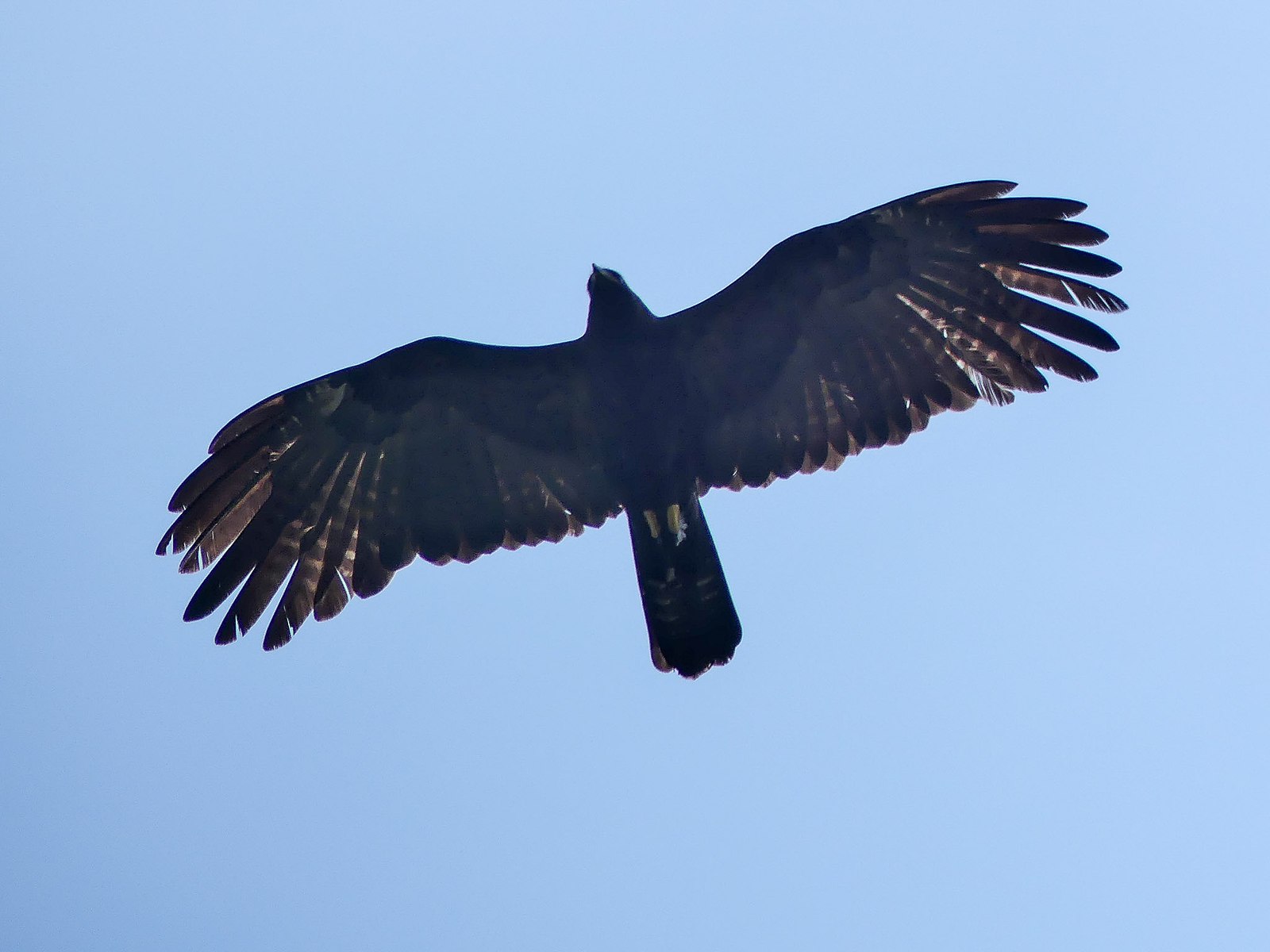Black eagles, also known as Verreaux’s eagles, do not have the ability to turn their heads a full 360 degrees. However, these majestic birds possess an impressive range of motion in their necks, allowing them to rotate their heads approximately 210 degrees in one direction.
The Remarkable Neck Flexibility of Black Eagles
The key to the black eagle’s exceptional neck flexibility lies in their anatomy. These birds have 14 neck vertebrae, which is twice the number of vertebrae found in human necks. This additional spinal flexibility enables black eagles to scan their surroundings with remarkable ease and precision.
In comparison, bald eagles can swivel their heads 180 degrees, while owls can rotate their heads approximately 270 degrees. It is important to note that the idea of birds, including black eagles, being able to turn their heads a full 360 degrees is a common misconception.
The Exceptional Eyesight of Black Eagles
 Image source: Black Eagle by Mike Prince
Image source: Black Eagle by Mike Prince
Black eagles are known for their exceptional eyesight, which is eight times stronger than human vision. Their eyes are large, taking up half of their skull, with a retina that allows for a higher Nyquist limit and a more pronounced fovea with rod cells and cone cells. This unique eye structure enables black eagles to easily spot prey from great distances, contributing to their status as formidable hunters.
The Hunting Prowess of Black Eagles
Black eagles are apex predators, known for their impressive hunting skills. These birds of prey primarily feed on small to medium-sized mammals, such as hares, mongooses, and even young antelopes. Their sharp talons and powerful beaks make them well-equipped to capture and tear apart their prey.
Hunting Techniques of Black Eagles
- Soaring and Scanning: Black eagles often soar high above the ground, using their exceptional eyesight to scan the landscape for potential prey.
- Surprise Attacks: When a target is spotted, black eagles will dive down at high speeds, using the element of surprise to catch their prey off guard.
- Aerial Maneuverability: These birds possess remarkable aerial agility, allowing them to make tight turns and sudden changes in direction to outmaneuver their prey.
Habitat and Conservation Status of Black Eagles
Black eagles are found in various regions of Africa, including sub-Saharan Africa, the Horn of Africa, and parts of southern Africa. They typically inhabit mountainous and rocky areas, where they can build their large nests and have a clear vantage point for hunting.
Conservation Status
The International Union for Conservation of Nature (IUCN) classifies the black eagle as a Least Concern species, indicating that their population is stable and not currently under threat of extinction. However, like many other raptor species, black eagles face various threats, such as habitat loss, persecution, and the use of pesticides.
Conclusion
While black eagles cannot turn their heads a full 360 degrees, these magnificent birds possess an impressive range of motion in their necks, allowing them to scan their surroundings with remarkable ease. Their exceptional eyesight and hunting prowess make them formidable predators, playing a crucial role in the ecosystems they inhabit. As we continue to learn more about these remarkable birds, we can appreciate the unique adaptations that enable them to thrive in their natural environments.

